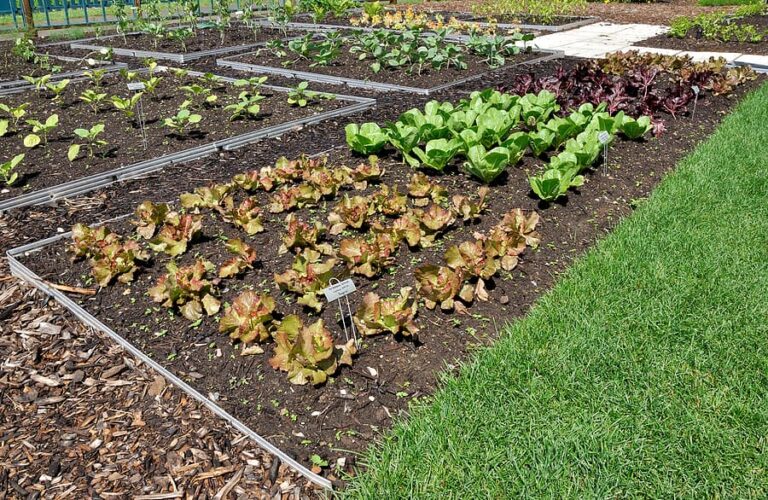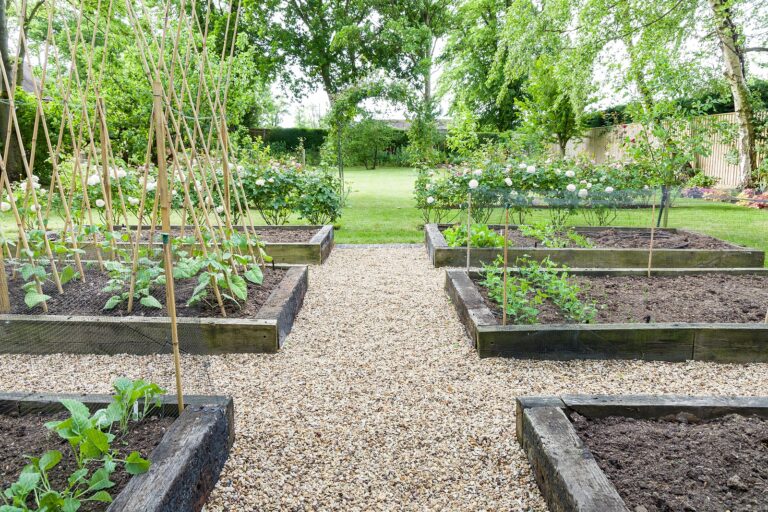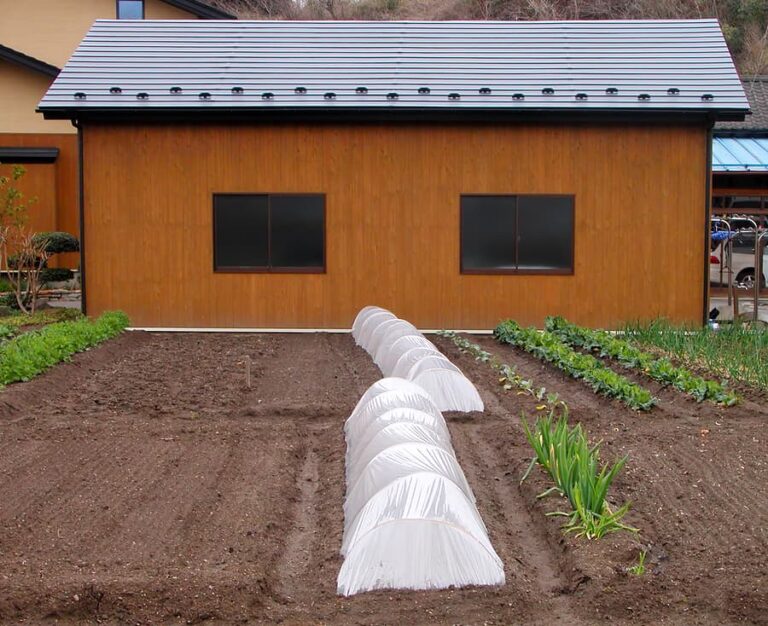Zone and Sector Planning for Regenerative Gardens
Effective regenerative gardening starts with thoughtful design, and two key tools for planning are zone and sector analysis. Zone planning focuses on how often you visit and interact with different parts of your garden, while sector planning considers external factors like sun, wind, water flow, and wildlife. Together, they help you create a garden that is both productive and sustainable.
Over years of experience, I’ve found that applying zone and sector planning makes garden management easier, improves resource use, and maximizes yields. Whether you’re working in a small backyard or a larger property, understanding zones and sectors ensures plants, animals, and resources are placed where they thrive best.
Understanding Zone Planning
Zones are based on frequency of use and attention:
- Zone 0: Home or indoor growing spaces
- Zone 1: Vegetables, herbs, and plants you tend daily
- Zone 2: Less frequently visited crops, larger perennial beds, or small orchards
- Zone 3: Larger orchards, pastures, and rotational grazing areas
- Zone 4: Wild or semi-managed woodlands, wildlife habitat
- Zone 5: Wilderness or natural areas left untouched
Tip: Place high-maintenance plants close to your home, and low-maintenance or self-sustaining systems farther out.
Understanding Sector Planning
Sectors are external forces or energies affecting your garden, such as:
- Sun paths and seasonal light changes
- Prevailing winds
- Water flow, runoff, and erosion patterns
- Wildlife pathways
- Noise or human traffic
Tip: Observe your property throughout the day and across seasons to map sectors accurately. Place sensitive plants away from harsh winds or excessive sun and use natural barriers to manage water and wildlife.
Combining Zones and Sectors
- Map your property with zones based on daily interaction.
- Overlay sector analysis to account for sun, wind, water, and wildlife.
- Place plants, animals, and structures in locations that optimize growth, yield, and efficiency.
- Use swales, hedges, and trellises to manage water and wind impacts.
- Adjust zones and sectors as the garden evolves and plants mature.
Tips from My Garden
I keep my vegetable beds (Zone 1) near the kitchen and herb garden, while fruit trees and shrubs (Zone 2) occupy slightly larger areas farther out. Swales and mulch manage water flow, while hedges protect sensitive plants from wind. Observing sun angles and wildlife activity helps me rotate crops and place pollinator strips effectively, making the garden both productive and resilient.
Zone and Sector Planning Cheat Sheet: Optimize Garden Layout and Productivity
Why Use Zones & Sectors
- Reduce labor and increase efficiency
- Protect plants from environmental stress
- Maximize yields and garden resilience
- Improve water and nutrient use
- Create a sustainable, low-maintenance garden
Zone Planning: Place Plants by Attention Needs
| Zone | Description | Examples & Tips |
| Zone 0 | Home / indoor growing | Indoor seedlings, herb pots; daily attention |
| Zone 1 | Daily-use areas | Kitchen garden, salad greens, frequently harvested herbs |
| Zone 2 | Moderate attention | Larger perennial beds, small orchards, shrubs |
| Zone 3 | Occasional attention | Orchards, rotational grazing, large fields |
| Zone 4 | Minimal management | Semi-managed woodlands, wildflower meadows |
| Zone 5 | Untouched wilderness | Preserve natural habitat, biodiversity zones |
Tip: Keep high-maintenance crops close; self-sustaining systems farther away.
Sector Planning: Account for External Forces
| Sector | Influence | Quick Tips |
| Sun & Light | Growth and photosynthesis | Map seasonal sun paths; shade sensitive plants |
| Wind | Desiccation, plant stress | Plant windbreaks or place resilient crops in exposed areas |
| Water Flow | Erosion, runoff, irrigation | Use swales, contour beds, and mulch to manage water |
| Wildlife & Pests | Crop damage or pollination | Provide barriers, hedges, or pollinator habitats |
| Human Activity | Traffic and noise | Protect sensitive areas and plan access paths accordingly |
Combining Zones & Sectors
- Map zones by interaction frequency.
- Overlay sectors (sun, wind, water, wildlife).
- Place plants, animals, and structures where they thrive best.
- Use swales, hedges, and trellises to mitigate environmental stress.
- Adjust layout seasonally and as plants mature.
Practical Tips
- Start with a simple sketch of your property.
- Observe your garden throughout the day and seasons.
- Rotate crops and animals based on zone accessibility.
- Protect sensitive plants from extreme conditions using natural barriers.
- Incorporate perennials and pollinator habitats in outer zones for low-maintenance support.
Regenerative Gardening Learning Hub
🌿 Start here: The Complete Guide to Regenerative Gardening and Farming
1️⃣ Soil Health and Living Systems
- How to Build Living Soil: A Step-by-Step Guide
- Understanding the Soil Food Web: Life Beneath Our Feet
- How to Use Compost and Vermicompost in a Regenerative Garden
- Mulching for Soil Health: How to Protect and Feed the Soil Naturally
- Using Mycorrhizal Fungi to Boost Plant Health and Yield
- Minimal Tillage: Why and How to Disturb the Soil Less
- How to Test, Read, and Rebalance Your Soil Naturally
2️⃣ Biodiversity and Polyculture
- How to Design Polycultures and Companion Plantings for Regenerative Gardens
- Integrating Native Plants into Your Food Garden
- Creating Habitat for Beneficial Insects and Pollinators
- Cover Cropping for Biodiversity and Soil Regeneration
- Crop Rotation for Soil Fertility and Pest Management
3️⃣ Carbon Sequestration and Organic Matter
- Why Capturing Carbon in the Garden Is Important and Fights Climate Change
- Increasing Soil Carbon with Compost, Mulch, and Deep Roots
- Biochar: What It Is and How to Use It in the Garden
- How to Keep Soil Covered Year-Round to Build Carbon and Fertility
4️⃣ Water Stewardship
- How to Use Water Wisely: The Principles of Water-Wise Regenerative Gardening
- Building Swales and Contour Beds to Slow and Sink Rainwater
- Mulch, Groundcovers, and Soil Structure for Water Retention
- Harvesting Rainwater for Regenerative Gardens
5️⃣ Perennial Crops and Permanent Systems
- How to Transition from Annuals to Perennials in the Vegetable Garden
- Perennial Vegetables for Regenerative Systems
- Agroforestry and Food Forest Basics for Gardeners
- Integrating Fruit Trees and Shrubs into the Vegetable Garden
6️⃣ Animal Integration
- Chickens in the Garden: How to Use Them Regeneratively
- Using Worms and Bees as Regenerative Allies
- The Role of Animals in Closing the Nutrient Loop
7️⃣ Human and Community Connection
- The Ethics of Regenerative Gardening: Care for Earth, People, and Future Generations
- How to Build a Community Garden Using Regenerative Principles
- Teaching Regenerative Gardening to Children and Beginners
- Healing the Land and Ourselves: The Psychology of Regenerative Practice
8️⃣ Regenerative Design and Planning
- How to Plan a Regenerative Garden from the Ground Up
- Regenerative Gardening Principles Simplified for the Home Gardener
- Home Garden Permaculture
- How to Create a Home Food Forest
- French Intensive Gardening
- Square Foot Gardening
- Zone and Sector Planning for Small Regenerative Gardens
- Using Observation and Feedback to Improve Your System Each Season
9️⃣ Inputs and Outputs: Closing the Loop
- How to Make and Use Compost Tea and Fermented Plant Extracts
- Zero Waste Gardening: How to Cycle Nutrients and Minimize Inputs
- How to Build a Closed-Loop Garden System
10️⃣ Case Studies and Personal Experience



